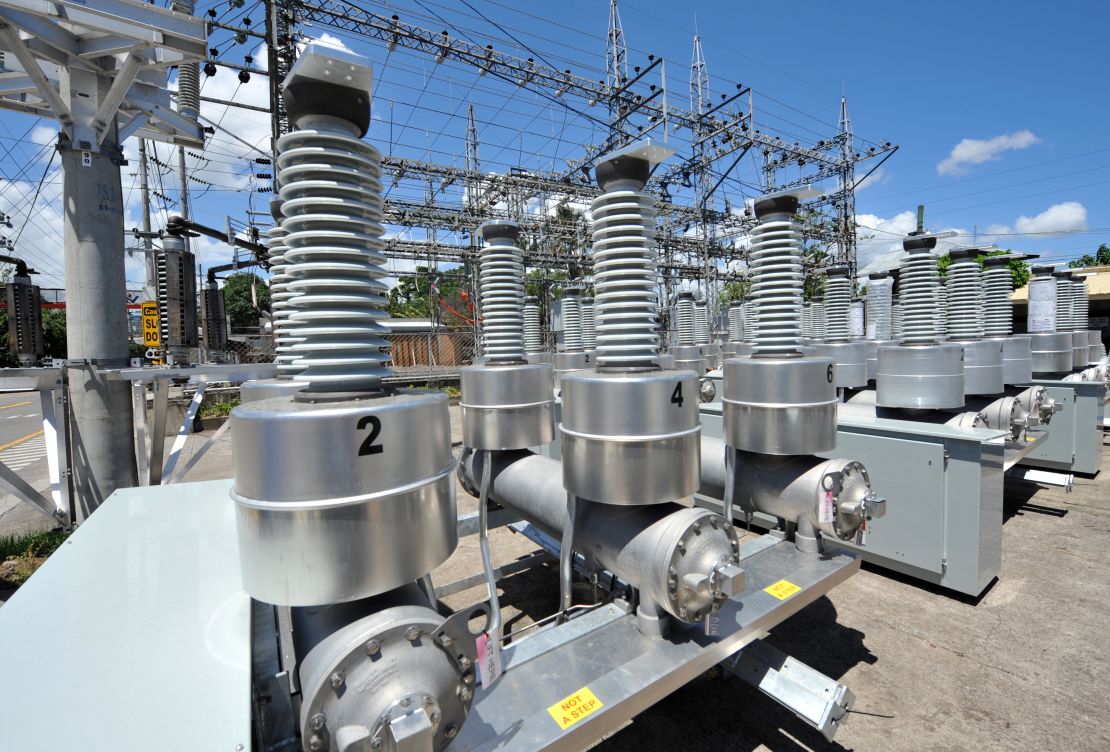The Philippines’ power grid is under the full control of the Chinese government and could be shut off in time of conflict, according to an internal report prepared for lawmakers seen by CNN.
China’s State Grid Corporation has a 40% stake in the National Grid Corporation of the Philippines (NGCP), a private consortium that has operated the country’s power lines since 2009. Concerns over potential Chinese interference in the Philippine energy system have dogged the arrangement since it was first agreed a decade ago.
Lawmakers called for an urgent review of the arrangement this month after the report claimed that only Chinese engineers had access to key elements of the system, and that power could in theory be deactivated remotely on Beijing’s orders.
There is no history of such an attack on a power grid by China, nor has any evidence been presented to suggest that any was imminent, only that it was theoretically possible in future.
The report, prepared by a government body and provided to CNN by a source who requested confidentiality, warned that the system was currently “under the full control” of the Chinese government, which has the “full capability to disrupt national power systems.”
“Our national security is completely compromised due to the control and proprietary access given by the local consortium partner to the Chinese government,” the report warned.
In a statement, China’s Ministry of Foreign Affairs said “China’s State Grid Corporation participates in projects run by the National Grid Corporation of the Philippines as a partner of local companies.”
“The Philippines is a neighbor and important partner of China’s. We support Chinese companies conducting business in the Philippines in accordance with laws and regulations to expand mutual benefits and win-win cooperation,” the statement added. “We hope certain individuals in the Philippines view such bilateral cooperation with an open mind as well as an objective and fair attitude. They shouldn’t over-worry or even fabricate things out of thin air.”
CNN has reached out to NGCP and TransCo – which owns but does not operate the power grid – for comment on this story.
‘With a single switch’
Concerns over the power grid arrangement were raised by senators during a debate over the 2020 energy budget this month. Senator Sherwin Gatchalian, representing the government, said that electricity could potentially be shut off remotely, or by foreign actors.
“I was advised by the president of TransCo that they have studied this type of possibility. I was advised that manual operation of transmission lines is possible. A takeover can happen, but TransCo, with their technical capability, can then manually take over,” Gatchalian said Tuesday, without referencing China explicitly.
“With a single switch, no electricity would be transmitted to any of our homes, our businesses, (or) any of our military facilities,” said Gatchalian, who is chair of the Senate Energy Committee. In such an instance, it would take between 24 and 48 hours to get the grid back up and running, he added.
Opposition Senator Risa Hontiveros said China’s co-ownership of the NGCP brought with it “serious national security concern given China’s recent behavior and hegemonic aspirations.”
“As long as the system operations are controlled and managed by Chinese engineers (they have) an enormous power” over the country’s energy supply, said Hontiveros. “This would pose a great risk to public infrastructure and national security.”
Gatchalian said he shared Hontiveros’ concerns and promised the government would improve supervision and monitoring of the power grid to ensure control “remains in the hands of Filipinos.”
“The (grid) is probably one of the most vital facilities in our country,” said Gatchalian.

Chinese controlled
The NGCP handles the distribution of electricity across the Philippines, linking power plants and consumers throughout the country, supplying almost 78% of households in the country of over 105 million, according to the internal report.
It was privatized in 2009, with China’s state Grid Corporation taking a major stake, as well as providing staff to help run the systems in the Philippines.
According to the report provided to CNN, the technology upon which the grid is based has increasingly been switched over to Huawei products, which the report claims are “completely proprietary” and can only be operated by Chinese engineers. During the Senate debate, Gatchalian acknowledged that Chinese engineers had control over certain systems and that some manuals were only provided in Chinese, against regulations.
In particular, the report warns the Supervisory Control and Data Acquisition (SCADA) system used to monitor substations, transformers and other electrical assets is completely dependent on Huawei technology. “None of the local engineers are train(ed) nor certified to operate the system,” the report said.
In a statement to CNN, Huawei said the claims in the report do “not reflect the facts.”
“Huawei has never provided any equipment for NGCP’s control systems,” a spokeswoman said. “As a leading global ICT solutions provider, Huawei has always strictly complied with all applicable laws and regulations of the countries where it operates. Huawei is committed to providing secure and reliable products and services to each of its customers.”
The company has been dogged this year by accusations that it poses a national security risk, with Washington largely blocking it from expanding 5G offerings in the US and pushing allies to do the same. Huawei has consistently said that it is a private company and does not give the Chinese government any access to or control over its technology.
Other systems within the Philippine national grid were also provided and largely operated by Chinese companies, the internal report said, including submarine cables linking power stations across islands, and key control apparatus, some of which are operated by engineers in China over the internet.
It described the system as “operated by foreign nationals (Chinese) at critical access levels,” adding that “critical system operations are all under the control of foreign nationals – locally and offshore.”
The report urged lawmakers to return control and oversight of the key power systems to the Philippine government.
Territorial dispute
While some senators downplayed the threat, with majority leader Juan Miguel Zubiri saying “as long as we’re not being invaded,” then potential Chinese control over the grid was not a problem, others remained concerned and urged the government to take action.
“There is obviously a national security concern here,” said Senator Richard Gordon. “We have given (partial) control of our grid to a foreign corporation that has interests that collide with our country in the West Philippines Sea.”
The West Philippines Sea is what Manila calls much of the South China Sea, where it is engaged in a long-running territorial dispute with Beijing. China claims almost the entire sea as its sovereign territory, and has spent recent years militarizing and building up sandbars and islets across the region.
In 2016, a tribunal in The Hague ruled in favor of the Philippines in a maritime dispute, concluding China has no legal basis to claim historic rights to the bulk of the South China Sea.
Chinese President Xi Jinping rejected the decision by the Permanent Court of Arbitration, which is likely to have lasting implications for the resource-rich hot spot, which sees $5 trillion worth of shipborne trade pass through each year.
“China will never accept any claim or action based on those awards,” Xi said. China had boycotted the proceedings.
Under current President Rodrigo Duterte, however, Manila has pulled back on the issue and sought to cultivate closer ties with Beijing. In 2018, the two countries preliminarily agreed to cooperate on oil and gas exploration in the region.
Following a visit by Duterte to Beijing in September, Chinese state media quoted Chinese President Xi Jinping as saying the two nations could take a “bigger step” in joint offshore oil and gas exploration.
“As long as the two sides handle the South China Sea issue properly, the atmosphere of bilateral ties will be sound, the foundation of the relationship will be stable, and regional peace and stability will have an important guarantee,” Xi said.
Duterte said Xi had offered the Philippines a majority stake in the venture if Manila agreed to ignore the 2016 ruling, according to CNN Philippines.
China’s Foreign Ministry spokeswoman Hua Chunying didn’t comment directly on the reported offer, but said the Philippines was “ready to expedite cooperation with China in the joint exploitation of oil and gas.”
“The two sides announced the establishment of an intergovernmental joint steering committee and a working group between relevant enterprises from the two countries on oil and gas cooperation,” she said.
Tensions remain, however, and some in the Philippines have been frustrated by Duterte’s apparent willingness to cozy up to Beijing at the cost of historical territorial claims.
In April this year, Manila filed a diplomatic protest with China over the presence of hundreds of Chinese vessels near a Philippine-administered island in the South China Sea. Duterte then threatened to send his troops on a “suicide mission” if Beijing didn’t “lay off” the island.



















